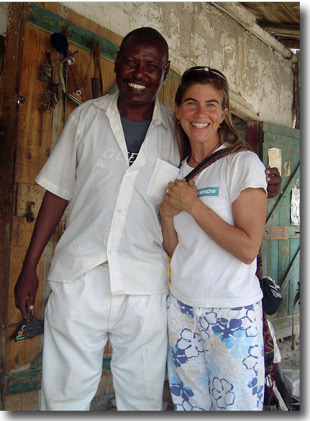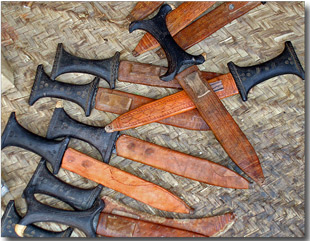 |
Sudan

With the wind on our back, the fleet made it's way wing and wing, around the point of Yemen through the small straight of Bab al Mendeb. In no time at all we worked our way past Djibouti, Eritrea and found ourselves coasting down the water way into Suakin, Sudan. As you enter the channel you may pass a dredger, a giant container or ferry ship, some camels sitting lazily by the waters edge and then the ruins. Our only stop in Sudan, Suakin was a friendly introduction to the continent of Africa. Though the kind locals we met are relatively untouched immediately by the atrocities taking place in Sudan and they don't appear to want for much when it comes to the essentials of food, water and shelter (a loose term), it still looked like a hard life. They shared with us their belief that people from different countries are the same - peaceful.
|
|
 |
|
 |
Suakin
|
Suakin Ruins
On the way to the anchorage you pass by these ghostly looking, war torn ruins, that we found has no big story attached to them. Suakin was one of the last known slave trading establishments and we thought may have had some connection to that, but if it did, they weren't telling.
|
We made the most of this little town as soon as we dropped anchor. Muhammed, the immigration agent and go to man, came aboard instantly and set us up with shore passes, fuel and currency, the Sudanese Rufiya. We hit the shore to explore and found smiling faces amongst buildings disguised as shambles, locals eager to practice their English and show us their world.
Fishing in this town is a main source of income and livelihood so the shores were lined with their colorful vessels.
|
|
Sleepy camels by the waters edge in Suakin |
|
|
|
|

|
Market day
A walk into town brought us to the open air market. It is fun to see the differences in produce from country to country as resources change. In Maldives had the tiniest eggs, Yemen had the largest fattest carrots, and Sudan had the opposite of both but delicious melons! |
The vendors, all men, sit atop their stalls as in the photo above and sell their goods.
Goats are the primary meat for consumption and donkey's the main source of transportation. Camels provide a great source for milk, cheese. Small tightly woven baskets carry the camels milk while they walk along and the movement eventually shakes it into cheese form.
We did have dinner ashore one night where a series of stalls sell kabob's, traditional bean's with cheese and a roasted chicken for $12 USD. We opted for the more traditional, less expensive beans, though they tasted a bit bitter, a little salt and warm bread can get anything down.
|
| Woven baskets for holding tea leaves and pots |
|
|
|
 |
It was difficult to take a lot of photos. Many people are not willing to pose, so one has to be very careful and respectful when trying to become the budding photo journalist. It was fascinating to see the majority of men here wearing their traditional tunics and clothing compared to the Yemeni men and the colorful garments after the all black Yemeni society of women. |
|
We had the special pleasure of making the acquaintance of Awad. A physician in Suakin and good will ambassador, he introduced himself to us the first night and self appointed guide for the few days to come. Amazingly intelligent and worldly he put us all to shame with his knowledge of geography, history, etc...He showed us the sights and sounds of Suakin while providing wise insights into the world of politics and life.
As he puts it, "The governments of countries are all the same - difficult, but they change, thankfully, the people of different countries are all the same too and never change - peaceful."
Originally from Southern Sudan he had interesting scars on his face that as he explained indicated different tribes. |

|
|
The black smith could be found sitting cross legged, diligently sharpening each dagger by hand. We spent an afternoon with the him learning about the history of various swords and daggers. In the same shop you can purchase camel saddles, whips, blankets, baskets and sandals from goat hair and hides.
We couldn't pass up the opportunity to purchase such an artifact.

|
A quick stop in the local coffee shop introduced us to the art of Sudanese beverages. The shop itself is a small square mud and brick building like all the others on the outside. The inside is charred with black soot from the coal fire used to heat the water for coffee. Add that head to the scorching sun outside and the room acts as a sauna as well.
Individual Coffee Pots |
 |
|
The coffee grounds are placed in the charming individual aluminum coffee pots then covered with a colorful mesh that acts as a filter for the tea leaves. The tiny porcelain cups are filled nearly full with straight sugar, then the coffee is poured into the tiny cups and consumed. A fragrant mixture of cloves, ginger and spices makes for a potent taste.
|
|
|
|
 |
|
|